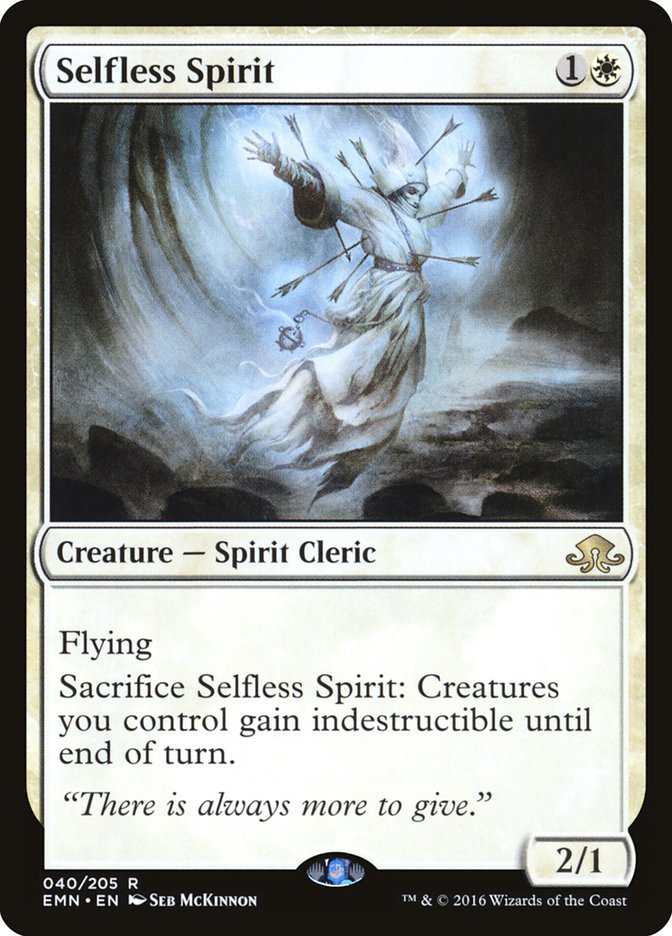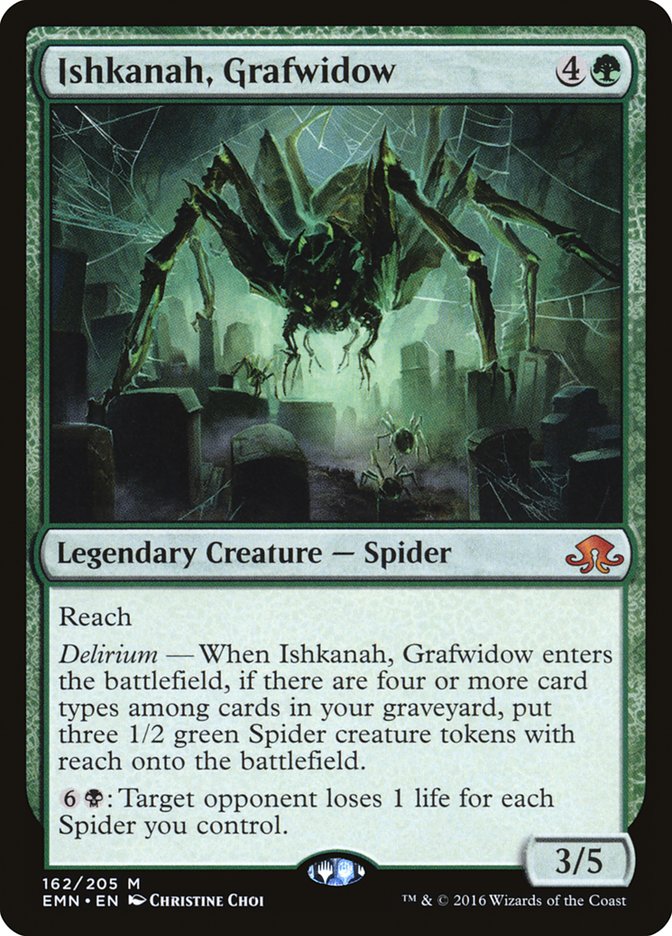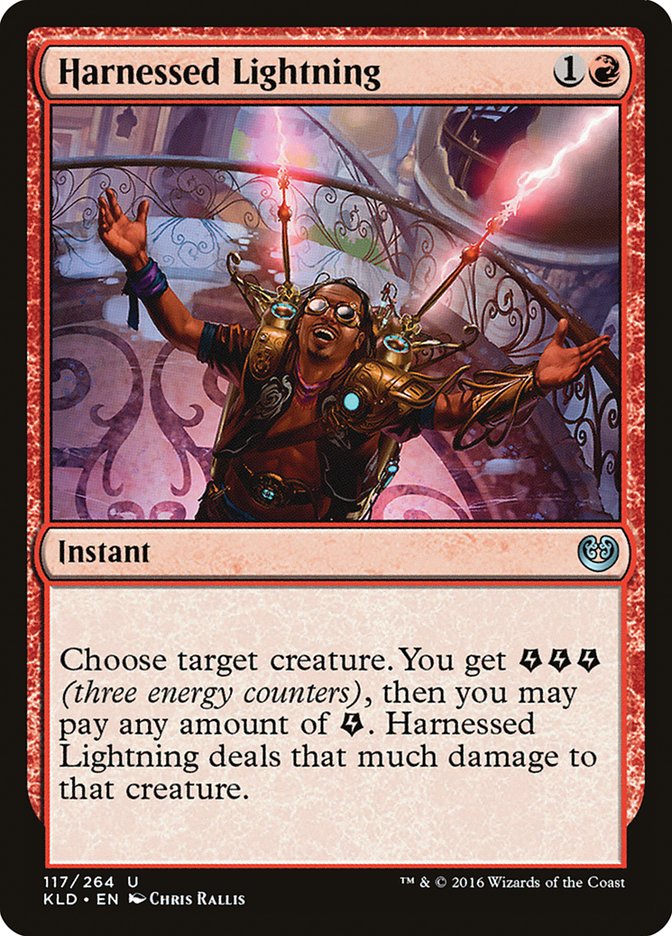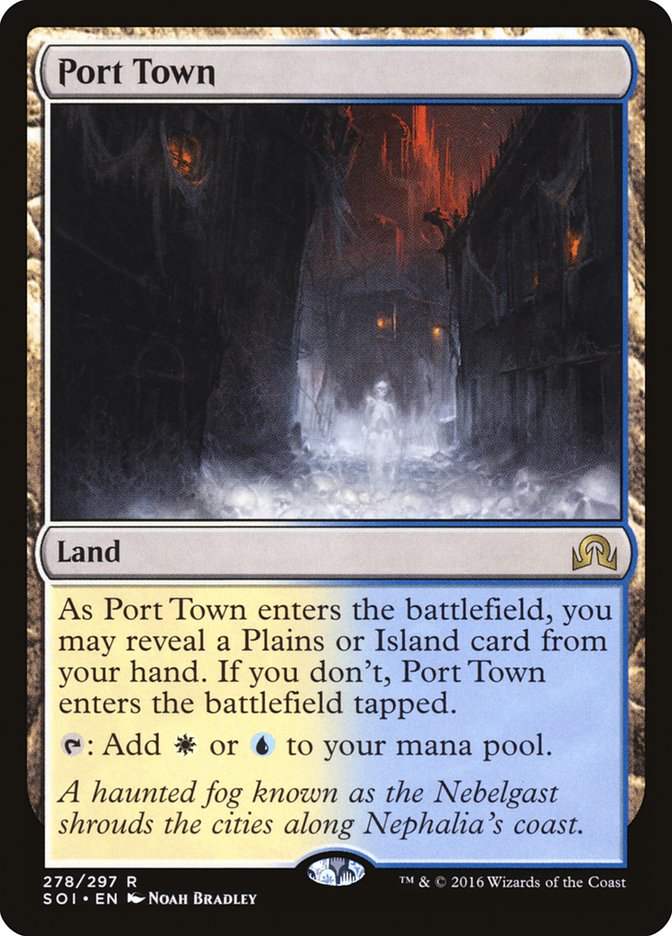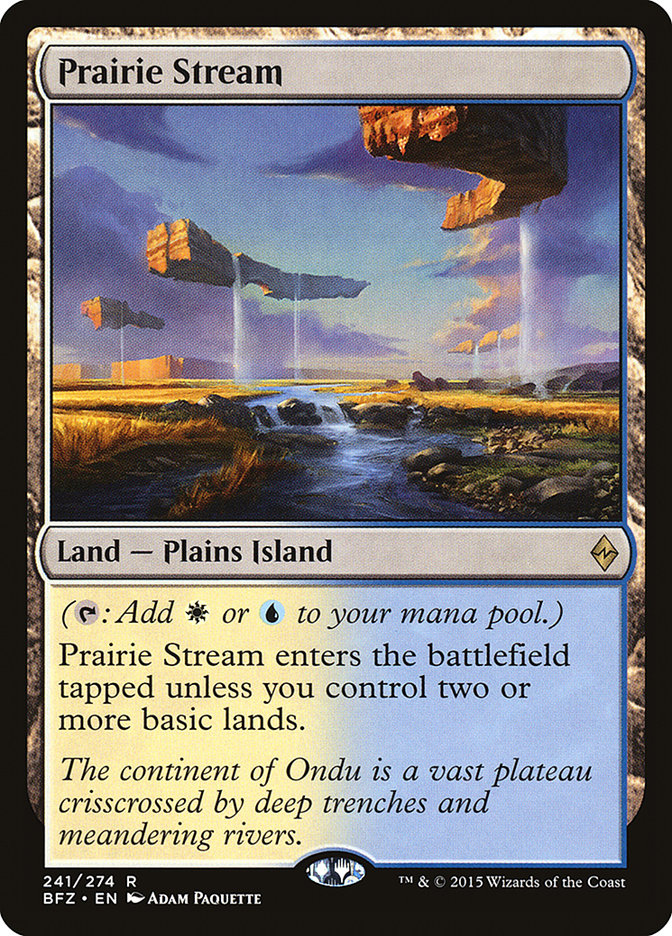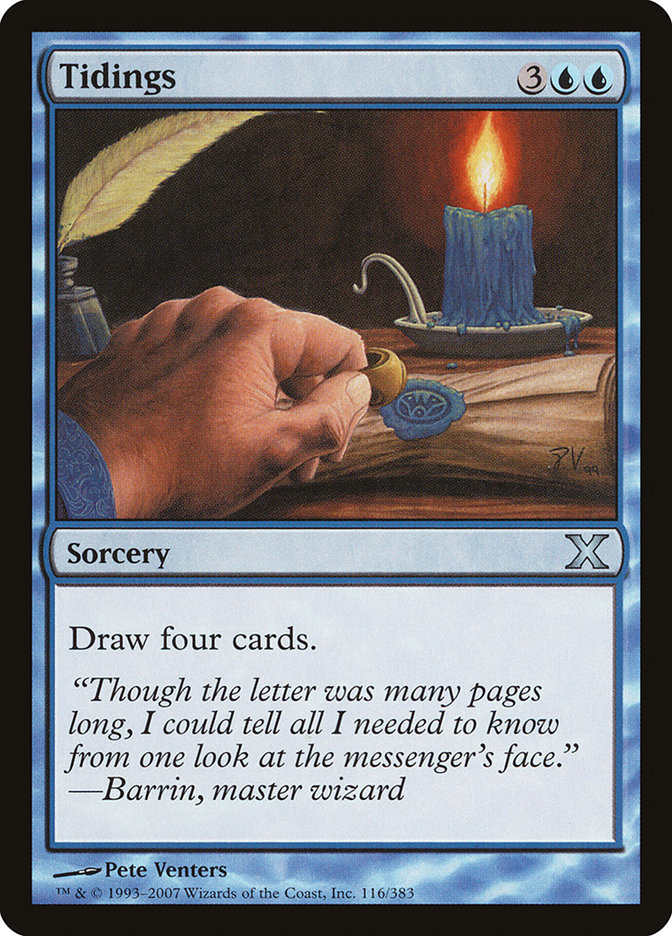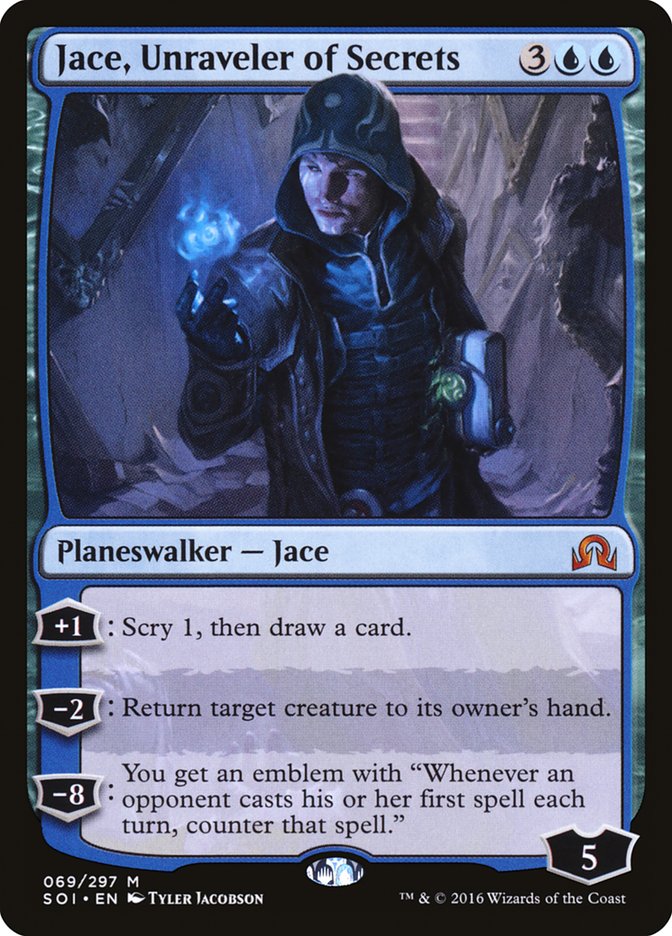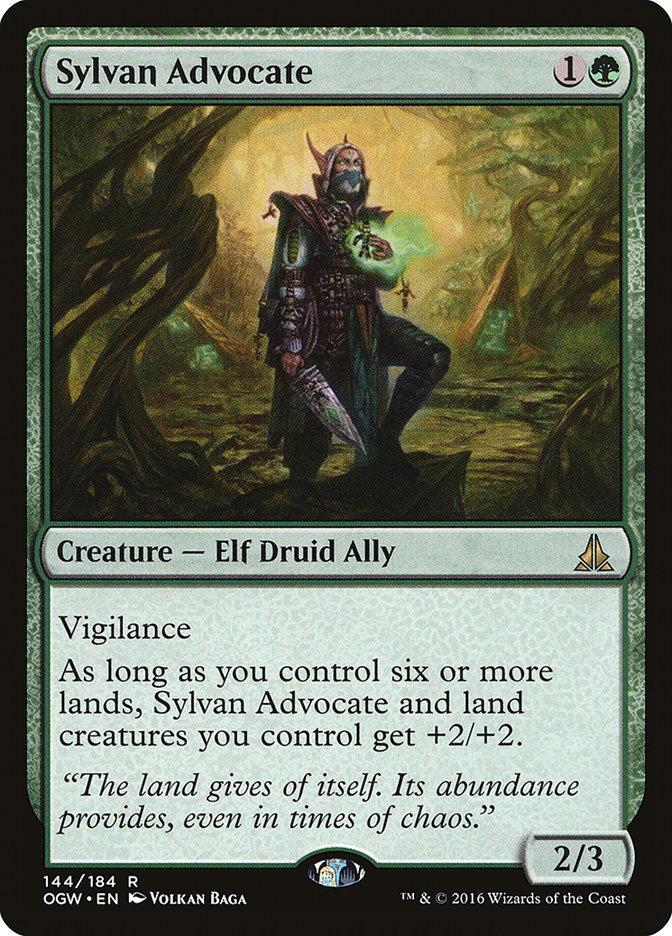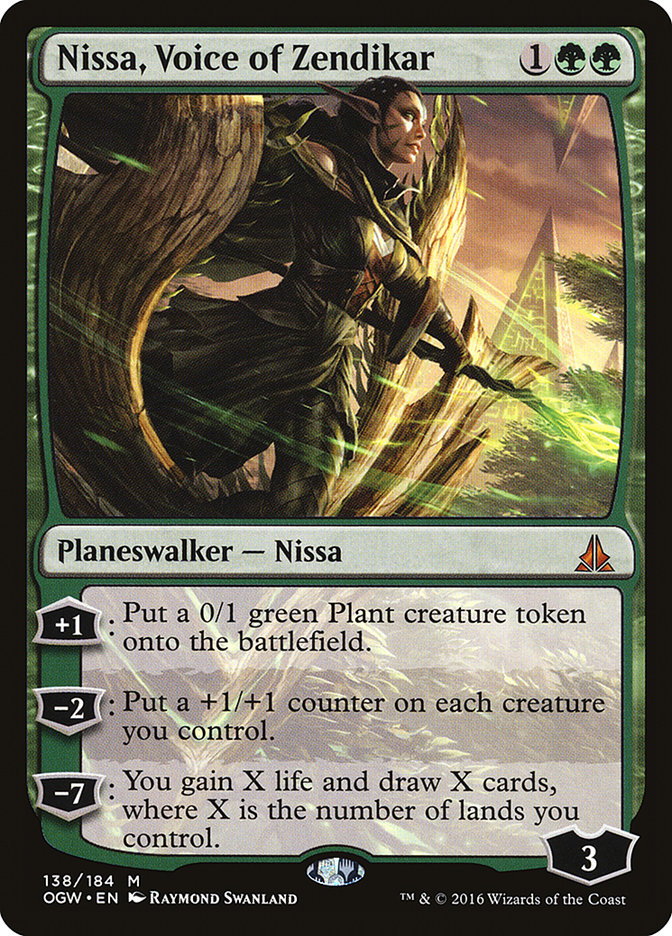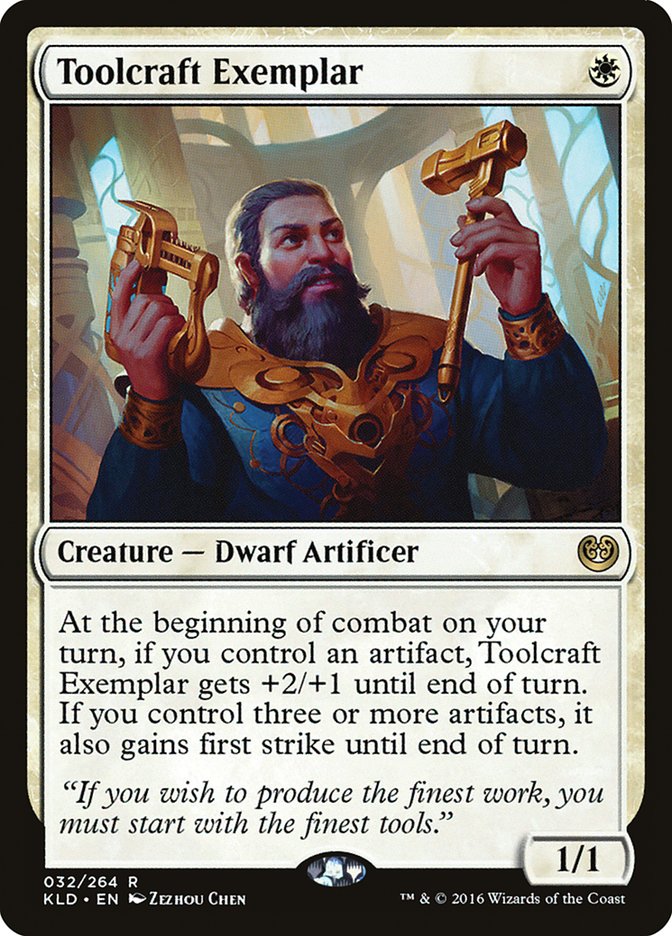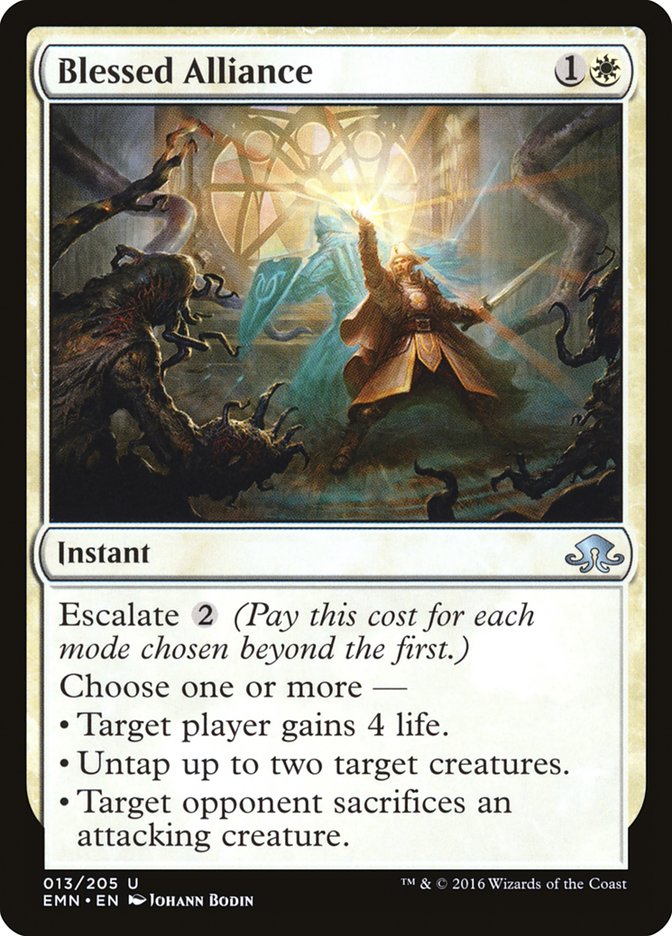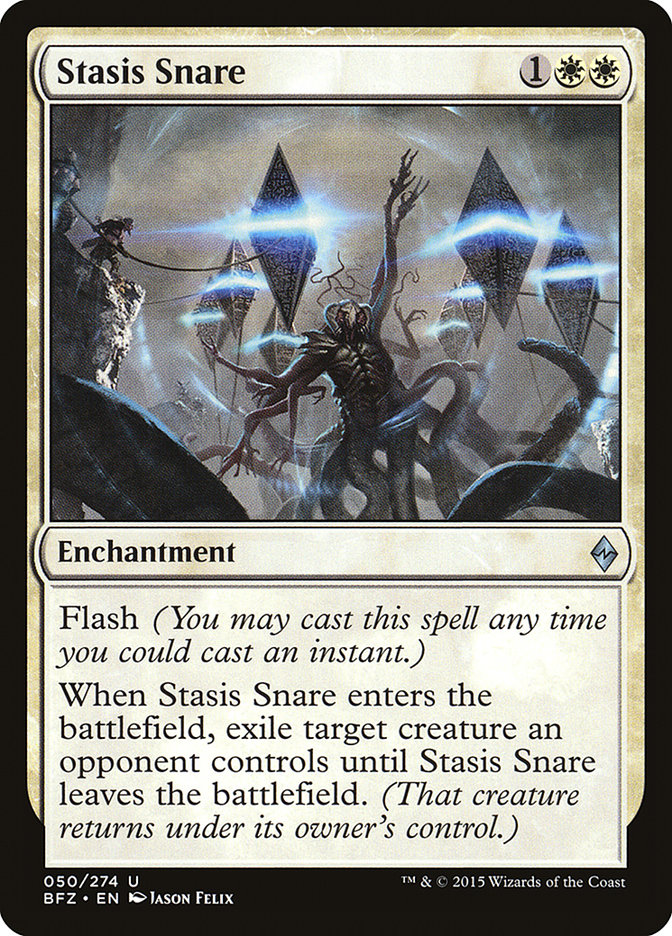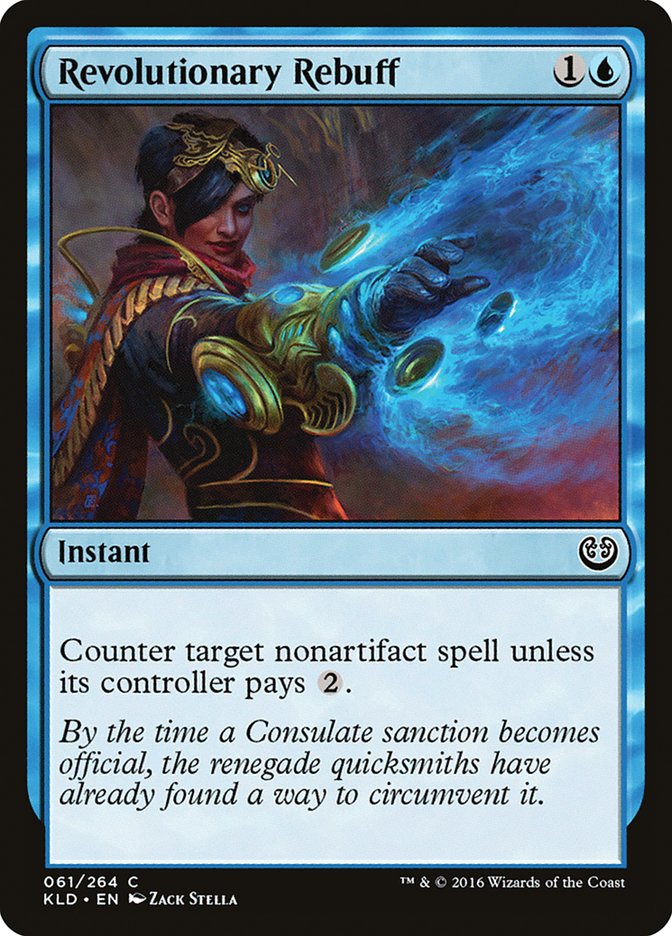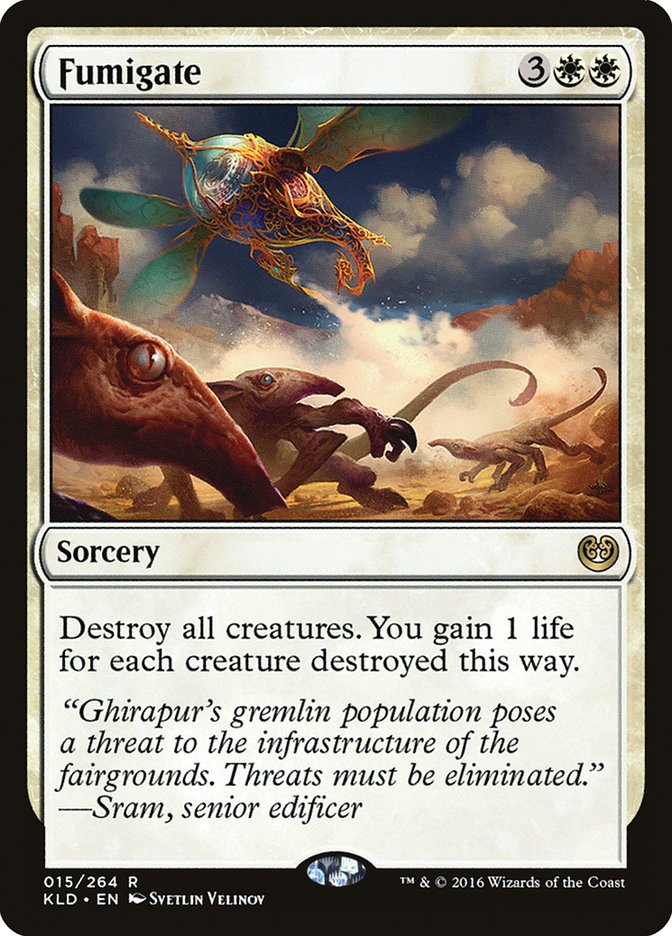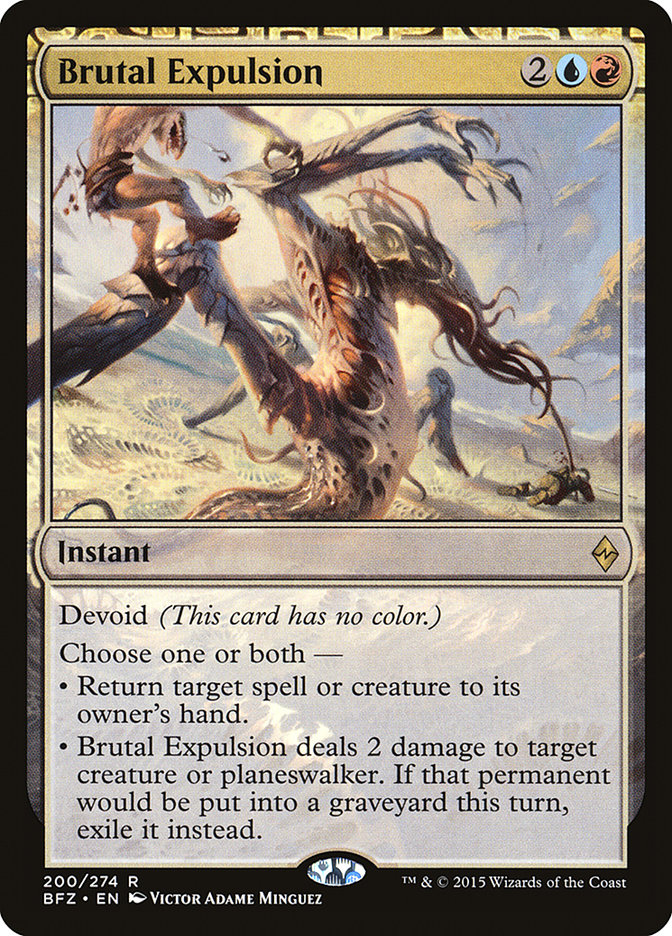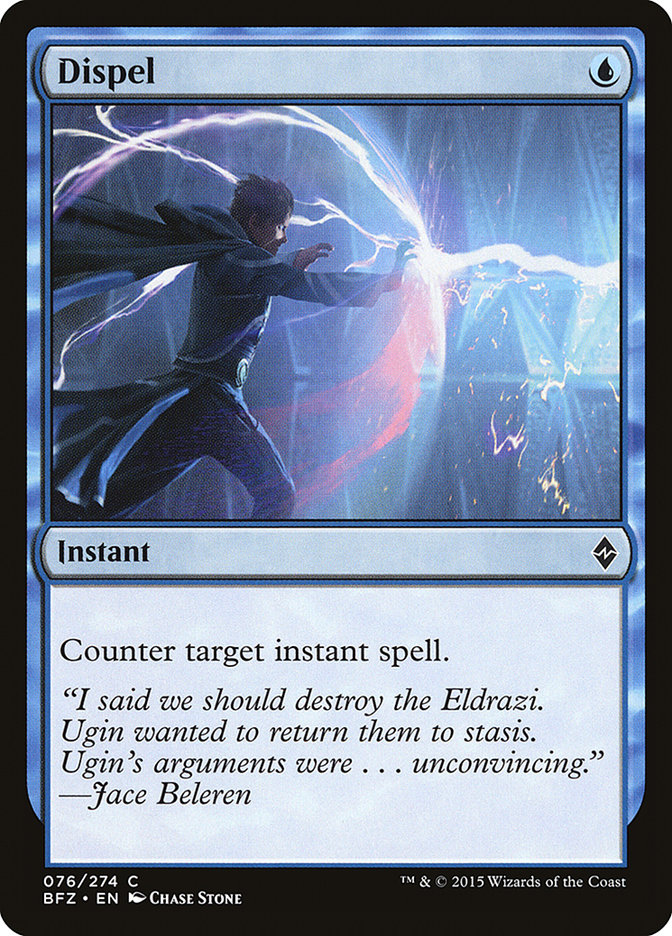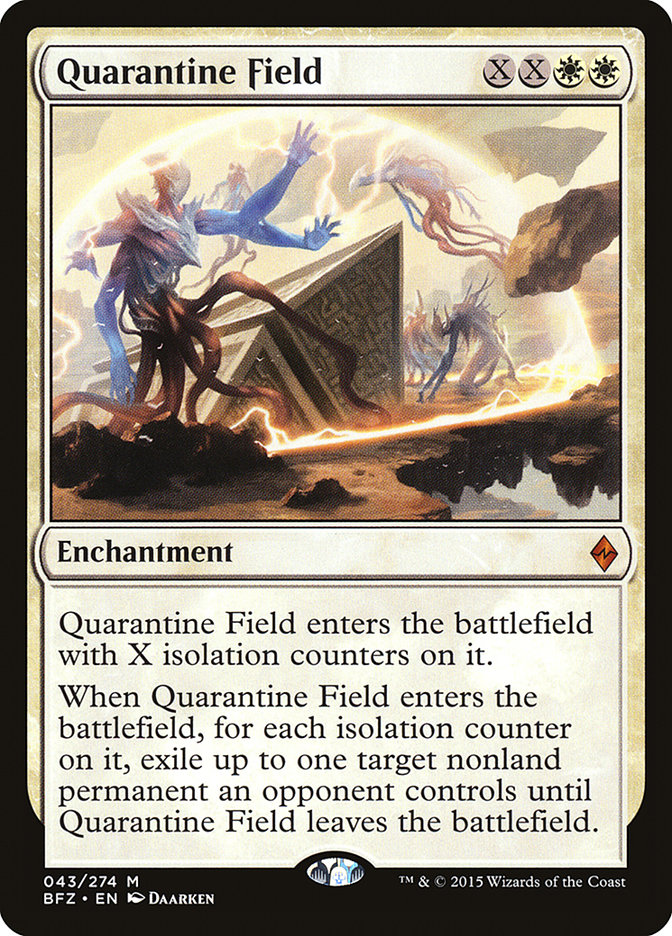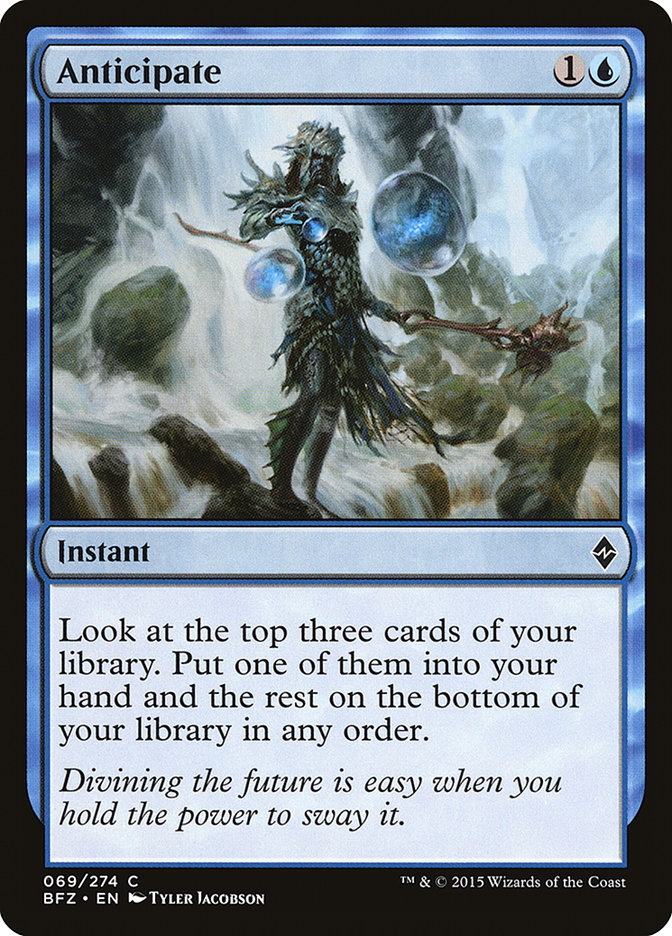“I’m just going to play W/U Flash. It wins everything.”
Three matches later, I came to an epiphany.
“W/U Flash is terrible. I have no idea how it wins anything.”
Ross Merriam started down this road last week, questioning W/U Flash’s place in a B/G Delirium metagame, but I think it goes further than that. None of the matches I played with W/U Flash were against the “bad matchup” of B/G Delirium, but it was still terrible.
Despite winning a bunch, W/U Flash is not a fundamentally good deck. It’s a rut the format is stuck in.
What W/U Does Right
The last time I wrote this basic article was five years ago, about a different W/U deck that was fundamentally awkward and won a lot: Delver. I started the same way.
Listen, there has to be some reason W/U Flash actually wins matches, because it wins a lot of them.
Everyone knows Gideon, Ally of Zendikar is great. As Jim Davis pointed out last week, it is a snowball threat. If you are behind when you cast Gideon, it often does a good Venerable Monk impression; if you are ahead, it wins the game.
W/U Flash is just the best deck at ensuring Gideon resolves on a stable battlefield. Both of its three-drops reverse any tempo buildup your opponent might have, ensuring a turn 4 Gideon can operate. It’s sure not the 1/2 Thraben Inspector that holds the fort.
Archangel Avacyn is a really good card when transformed into Avacyn, the Purifier. W/U Flash does that and also milks the enters-the-battlefield indestructible trigger for blocking value, even if Archangel Avacyn dies to removal in response.
Why W/U Is Terrible
Let’s start with the least fundamental flaw with the deck.
Spell Queller is an interestingly self-limiting effect. It certainly preys upon converge spells and Aetherworks Marvel, but those have mostly been eliminated from the format by how much Spell Queller is being played. Instead you are facing down decks heavy on removal and high-cost threats that Spell Queller interacts poorly against.
Also worth noting: Spell Queller has the same basic stats as Smuggler’s Copter and has similar instant-removal weaknesses. All of the removal aimed at the ubiquitous Vehicle takes down Spell Queller in an inconvenient fashion.
Now for the core issues.
Which other cards in W/U Flash are capable of winning a game?
…..
……..
………
Smuggler’s Copter? Just Smuggler’s Copter? You really think anyone is showing up to a Standard tournament unable to beat that card?
Okay, fine, maybe you can put up the most mediocre of beatdowns with your 1/2s and 2/3s and get somewhere, except…..
Standard right now is not a format that is friendly to mediocre long-game beatdowns. There are legitimate game-enders that go over the top of slow clocks. Mediocre beats just won’t cut it.
The other big issue with W/U Flash is that you are a 25-land deck with no mana sinks. You have to play 25 lands to make Prairie Stream and Port Town functional up the curve, but your deck has almost nothing to do with the sixth land you draw.
You don’t even have a real way to churn up cards to use mana. Smuggler’s Copter doesn’t count, as you need so many physical cards to get to five lands and cast spells. Thraben Inspector just cycles. Besides your two main threats, no single card carries multiple cards of value with it. Your deck is just prone to massively flooding even if it doesn’t get blown out by a bigger threat before it wins.
Ross Merriam fielded the idea that W/U Flash attracts players because it feels like you can set people up with tricky play, but in practice little of that happens. Your plays are relatively scripted and your answers limited. Only Archangel Avacyn is a huge blowout to walk into and that card is telegraphed like none other. This isn’t the Mistbind Clique / Cryptic Command dilemma; you aren’t playing into a different trick by avoiding their main threat.
Playing W/U Flash feels like playing a mediocre Sealed deck. You opened a couple of good rares and a removal spell or two, but the other 35 cards in your deck don’t actually do anything.
The Five-Set Standard Problem
The “25 land, no sinks, Gideon and Avacyn” deck isn’t anything new.
G/W Tokens last year was the same deck as W/U Flash is this year. This is a symptom of five-set Standard and is a problem that would have been endemic to the format had rotation not reverted to annual.
Understand: The fewer cards in a format, the less likely a cohesive shell exists that overpowers just having the best twenty or so cards and some filler.
But I never said G/W was terrible last year. Unexciting, but not terrible. Turns out, its filler was capable of winning games. Flooding and drawing your two-drop matters less when it is a 4/5 instead of a 2/1 with flying.
Let’s have a quick word about the rotation schedule. Many of the complaints about current Standard stem from this exact issue. The base idea of the bi-annual rotation was that three blocks of interactions would make for deeper potential cross-block synergies to make up for the reduced card count, but it didn’t play out that way. You get more potential variety of interactions, but in absolute power… not so much. While the third set in a block tended to shift a lot in theme, it still reinforced the basics of the block to improve previous linear mechanics, with rare exceptions like Journey into Nyx. Last format was especially egregious due to one dominant card (Collected Company) and the deeper format existing for approximately three events before rotating.
What Are the Good Decks?
B/G Delirium is a good deck. It has powerful cards at all points of the curve and great card selection.
Mardu Vehicles is a good deck. It has a powerful cohesive gameplan that has a surprising amount flexibility and resilience. It just doesn’t match up well against the primary good deck of B/G Delirium, so I can’t recommend it.
Aetherworks Marvel…. is not a good deck. Or, more accurately, 60% of the time it’s a great deck and the other 40% it’s a giant joke. Flip the percentages to “40% great, 60% mediocre” if you are playing the “G/R no Ulamog” list that has floated around Magic Online the last few weeks.
The deck you should be playing but aren’t is control. Torrential Gearhulk won Pro Tour Kaladesh for a good reason, and while a lot of that was Aetherworks Marvel being the most popular deck, it still has power to succeed.
Jeskai Control
While a different Brad ended up winning at the SCG Tour stop in Knoxville two weeks ago, Bradley Hill making it to the finals with the only outlier deck in the Top 8 was not a fluke.
Creatures (4)
Planeswalkers (3)
Lands (26)
Spells (27)

There is a lot of pressure on control from a lot of different angles in this Standard format, but this iteration of Jeskai Control covers most of the problematic ones.
The first big pressure: threats that require instant-speed answers. Smuggler’s Copter is the main one, but you also have creature-lands in the mix. Jeskai has a ton of great answers to those permanents, including Blessed Alliance for the ever-problematic but currently rare Lumbering Falls. With enough maneuvering and luck, you might even be able to hit an attacking Gideon with Blessed Alliance.
While something like Stasis Snare might look like a better removal spell for this role, it plays out significantly worse. Mana utilization in the mid-turns is huge with this deck and in general for current Magic, and being one mana more efficient enables more double-play turns. Stasis Snare’s double white also causes some mana strain, and the extra instants often enable Torrential Gearhulks to start swinging games earlier.
The other big pressure comes from planeswalkers. Ruinous Path is barely playable at best, so you have to fight them on the stack. The additional low-end countermagic is there to cover this. We are just learning that Revolutionary Rebuff is a real heir to the Mana Leak throne, and it is even more so in this deck where Noxious Gearhulk is a non-issue. Negate is a card I’m surprised hasn’t seen more maindeck play this season, as it covers not only Gideon, Ally of Zendikar but Smuggler’s Copter as well.
While your suite of seven counterspells is enough to cover Gideon, Ally of Zendikar, Liliana, the Last Hope can cause issues. On the play you are a favorite to manage it, but on the draw, not only are you down to three available answers, you will be facing down an emblem on their turn 7 before Torrential Gearhulk has a chance to attack.
This is where the best sideboard card for Jeskai comes into play. One of the biggest reasons to be Jeskai instead of Grixis or just U/R is that you can be a Gideon deck too. The best way to beat an opposing planeswalker is to just bash it to pieces. Very specifically, you can punish an early Liliana because it doesn’t progress the battlefield in a relevant way against a 5/5 attacker.
This is the big secret. Jeskai Control is everything W/U Flash wants to be, but is actually cohesive. When Gideon is in your deck and you don’t draw it, you are presenting a strategy very capable of winning matches. Jeskai is also good at turning games around from spots where Gideon would be poorly positioned. There’s also the turn 6 “Gideon with Harnessed Lightning up” play, which usually turns any attempt at pressuring Gideon into a disaster.
I don’t know if I would maindeck Gideon, as the linear control plan is so good at exploiting Game 1 configurations by overloading on ways to stop lower threat densities, but the card is making its way into my deck in the vast majority of matches.
Moving Forward
After playing a bit with this deck, the main thing I want to do is cut Fumigate. It isn’t fast enough to matter against Vehicles and doesn’t matter against the threats you have the biggest issues with.
This ripples out further than just Jeskai Control. With the metagame folding further and further into itself, your answers need to be better targeted. The metagame at the upcoming StarCityGames.com Invitational in Atlanta is going to be even further defined. Nonsense like Dead Weight is aptly named. You know exactly what cards you will be losing to. Don’t play cards that don’t fight them.
The other cards I would look at changing in Jeskai are in the sideboard. I honestly have no clue what Brutal Expulsion is trying to handle. It does exile Scrapheap Scrounger and Haunted Dead, but I think you have to admit defeat to the Zombies deck. Even if you want to try to fight that matchup, four-cost instants that don’t handle Prized Amalgams aren’t the way. Spell Queller on the other hand is good, but a full four is excessive. Three is probably a more accurate spot to cover the nonsense sector of the metagame.
In exchange, you can build your deck with a little more action against specific cards that trip you up from the main opposition decks and the mirror. An extra Negate to manage an early Liliana, the Last Hope would be my first add.
You can also fill in with coverage against some of the narrow nonsense you might face. Dispel is especially effective in both control mirrors and against blue varieties of Aetherworks Marvel to win counter wars. Another Quarantine Field is another catchall that also gives flexibility against nonsense like Metallurgic Summons while also handling planeswalkers that sneak through from B/G Delirium.
Regardless, the one thing you do not want to mess with is the smooth core of the deck. Three Anticipate is not four for a reason: your mana in the middle turns is too important to spend on card filtering. Same with no Prairie Stream and fewer double white spells: you need untapped mana across the board to keep pace.
Keep your deck functional. You need to play answers against some very good threats. Missing a beat will kill you, but your answers are sufficient if you can smoothly line them up.
The last tip I will give with Jeskai: you are still looking to close once the game is safe. You don’t have full inevitability, just most of it. Every one of your threats is good at ending the game quickly; don’t be afraid of doing so.






